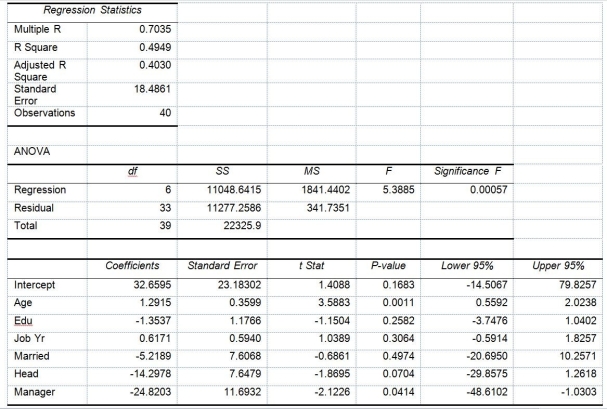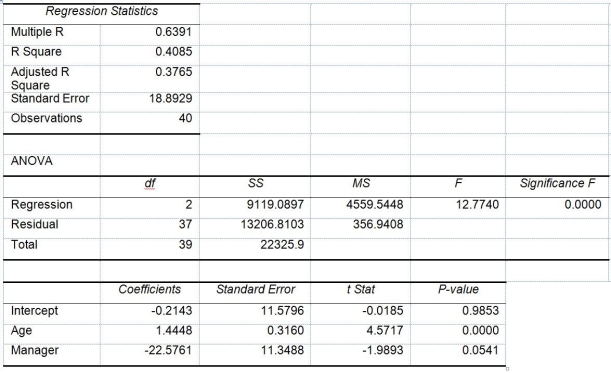TABLE 14-17


Model 2 is the regression analysis where the dependent variable is Unemploy and the independent variables are
Age and Manager. The results of the regression analysis are given below:

-Referring to Table 14-17 Model 1, we can conclude that, holding constant the effect of the other independent variables, there is a difference in the mean number of weeks a worker is unemployed due to a layoff between a worker who is married and one who is not at a 5% level of significance if we use only the information of the 95% confidence interval estimate for β₄.
Definitions:
Economic Concerns
Issues related to the financial health and stability of an economy, including inflation, unemployment, and GDP growth.
Housing
The provision of shelter or accommodation, including the structures and related policies that determine how residential spaces are built, allocated, and governed.
Null Hypothesis
A statistical hypothesis that assumes no significant difference or effect exists in the case under investigation.
Significance Level
The probability of rejecting the null hypothesis in a statistical test when it is actually true, a threshold for determining statistical significance.
Q3: Referring to Table 14-3, the p-value for
Q38: Private colleges and universities rely on money
Q65: The method of moving averages is used<br>A)
Q66: Referring to Table 14-8, the F test
Q89: Referring to Table 15-5, what is the
Q95: Referring to Table 17-10, a c chart
Q108: Referring to Table 13-13, the p-value of
Q152: Referring to Table 13-10, which is the
Q201: Referring to Table 13-11, what is the
Q322: Referring to Table 14-17 Model 1, what